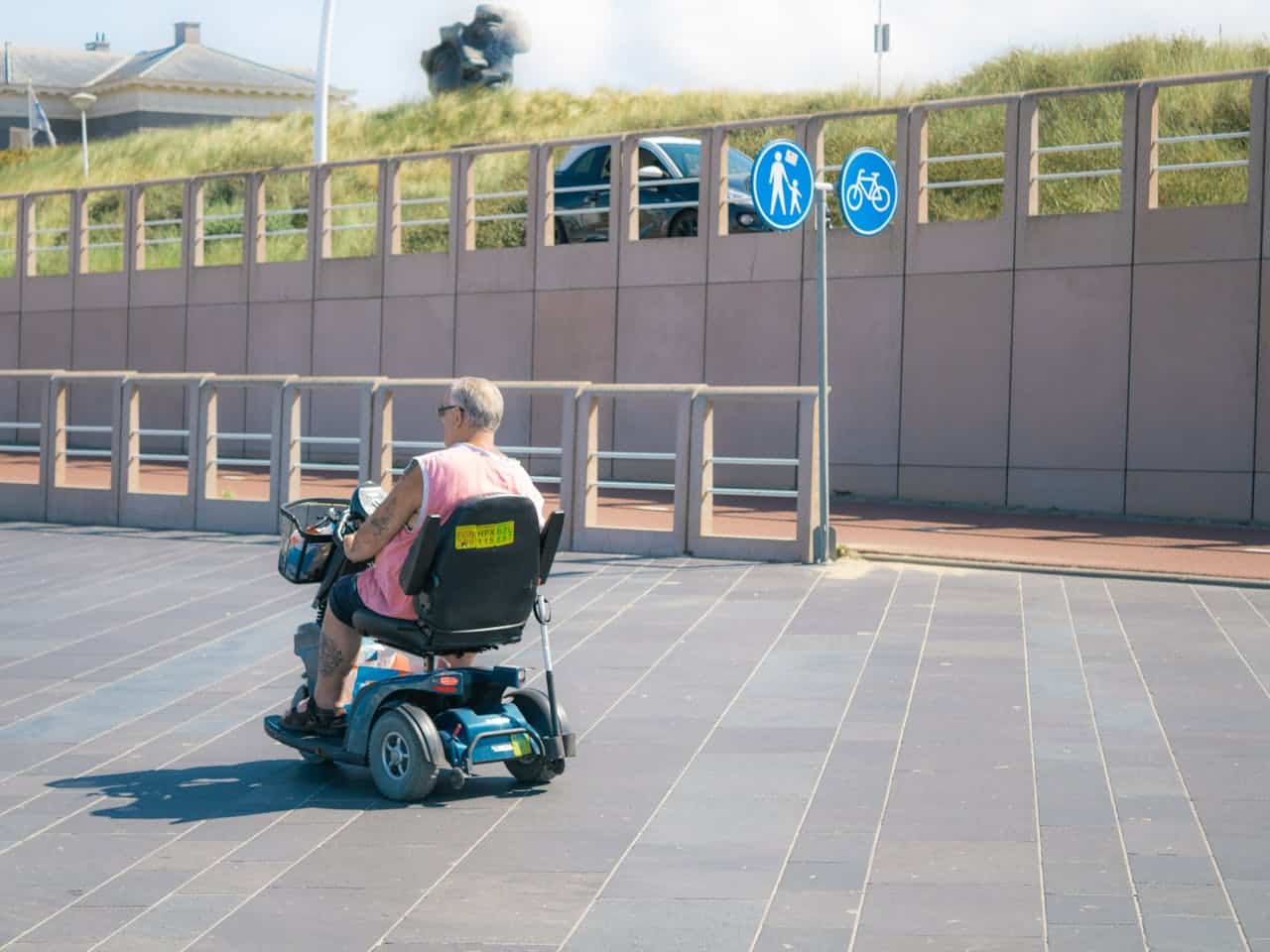Mobility scooters are usually faster than electric wheelchairs. This is a go-to solution for those who want to get a little wild around. While others opt for a peacefull ride, especially older adults. So, are mobility scooters really fast? Let’s check how fast can such a mobility device be and what models are marked as speedy mobility scooters.
Main Factors that Affect the Scooter’s Speed
Motor Power
The primary driver of a mobility scooter’s speed is its motor. Most modern mobility scooters are powered by electric motors. They offer an efficient and clean alternative to traditional gas-powered engines. The size and power output of the motor has a direct correlation with the scooter’s top speed.
Larger electric motors typically range from 500 to 1000 watts. They can propel scooters at higher speeds, often reaching up to 15 miles per hour (mph). Check Marc’s Mobility for fast mobility scooters. These more powerful motors are well-suited for riders who need to cover longer distances or navigate bumpy terrain. Conversely, smaller motors, in the range of 250 to 500 watts, are more common in entry-level mobility scooter models. Such medical devices tend to have a top speed of around 8-12 mph.
In fact, gas-powered mobility scooters, while less common, can achieve even higher speeds, sometimes reaching up to 20 mph. However, these models often come with additional considerations, such as increased maintenance requirements and fuel expenses.
Battery Capacity
The scooter’s battery capacity also determines its maximum speed and range. Mobility scooters typically use lithium-ion or lead-acid batteries. Lithium-ion batteries generally offer higher energy density and longer runtime.
Larger battery packs are typically in the range of 40-60 amp-hours (Ah). They can provide the necessary power to sustain higher speeds for extended periods. These high-capacity batteries enable mobility scooters to reach top speeds of up to 15 mph and maintain that pace for several miles. In contrast, smaller battery packs, around 20-30 Ah, may limit the scooter’s top speed to 10-12 mph and reduce the overall range.
You should strike a balance between speed and battery life. Depending on your specific needs, prioritize either longer range or higher top speeds.
Rider-Related Factors
The weight and size of the rider impact the scooter’s maximum speed. In the case of a heavy rider who exceeds the scooter’s load capacity, expect a significant reduction in the vehicle’s acceleration and top speed. Manufacturers typically specify weight limits, usually ranging from 250 to 500 pounds, to ensure safe riding performance.
Regulatory Considerations
The speed of mobility scooters is subject to various regulatory requirements. They usually vary across different regions and countries. In the United States, the federal government has set a maximum speed limit of 8 mph for Class 2 mobility scooters, which are intended for use on sidewalks and other pedestrian areas.
For individuals who require higher speeds, Class 3 scooters, with a top speed of up to 15 mph, are available. These mobility scooter models are designed for use on roads and may require additional safety features. These include turn signals and brake lights. Get the hang of the local regulations and ensure that your scooter’s speed aligns with the applicable laws and safety guidelines.
Practical Applications and Considerations
The appropriate scooter speed can vary depending on the environment and the user’s needs. In urban settings, where navigation through crowded sidewalks and intersections is common, a lower top speed of 8-12 mph may be more suitable, prioritizing maneuverability and safety. Conversely, in rural or suburban areas with wider roads and fewer pedestrians, a higher-speed scooter, up to 15 mph, can provide a more comfortable riding experience.
Some users may prioritize speed over range, while others may prefer a longer-lasting battery and a slightly lower top speed. Careful consideration of individual requirements is essential when selecting the right mobility scooter.
Frequently Asked Questions
Do I Need a License to Ride a Mobility Scooter?
In most cases, no license is required to operate a mobility scooter. However, regulations can vary depending on your location and the type of scooter. You should check with your local authorities to find out about the specific licensing requirements in your area.
How Fast Are Fast Mobility Scooters?
The fastest mobility scooters can reach speeds of up to 15 mph. These higher-speed models are classified as Class 3 scooters. These medical scooters are designed for use on roads rather than just sidewalks and pedestrian areas. Factors like motor power and battery capacity contribute to a scooter’s top speed.
Is It Safe to Ride a Mobility Scooter on the Road?
Riding a mobility scooter on the road can be safer than navigating busy sidewalks as long as you follow traffic laws and safety guidelines. Class 3 scooters, with their higher speeds, are intended for road use and often come equipped with features like turn signals and brake lights. These add-ons enhance visibility and safety. However, you should be aware of your surroundings when operating a mobility scooter on the road.
Conclusion
The top speed of a mobility scooter is influenced by a range of factors. It includes the motor power, battery capacity, and the rider’s parameters. These variables affect the choice of the appropriate mobility scooter to meet individual needs. Check your local law regulations regarding riding a mobility scooter for a safe ride.


















